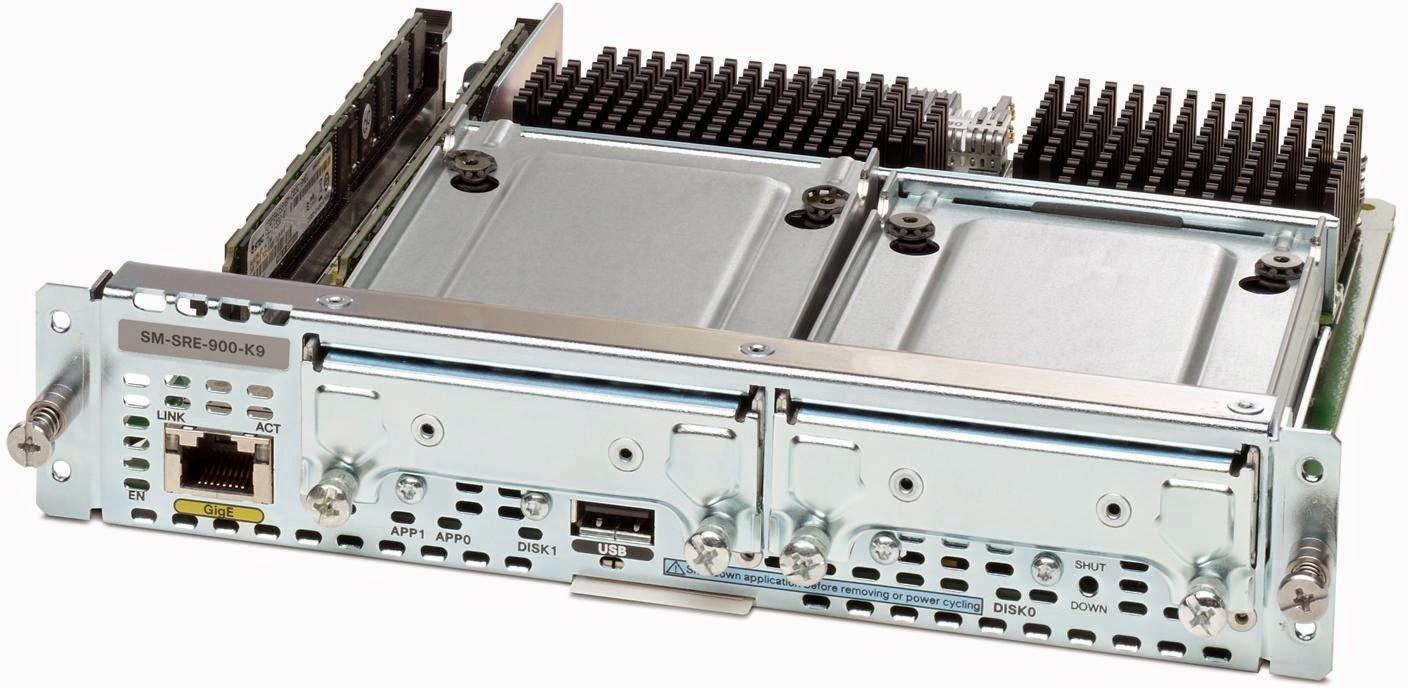Overview and Specifications
Cisco’s Services Ready Engine is an innovative and revolutionary product. It provides multiple forms of functionality, one of which is as a virtualization platform. This report briefly describes the performance capabilities of the SRE in terms of virtualizing a small branch office’s Windows 2008 server. There are various iterations of the SRE like the SRE 300, SRE 700/710 and SRE 900/910, each with their own specifications ranging from single core 1.0 GHz. processors to dual core 1.86 GHz. processors. The hard disk support goes up to 1 TB with support for RAID (0 or 1). The highest end SRE can support up to 8 GB of memory. The SRE 300 is a smaller Integrated Service Module while the SRE 700/710 and SRE 900/910 are Service modules that slot into the back of the router. The SRE’s have 3 gigabit ports that can be used. The first port available is a layer 3 port to the Routers CPU and is used mainly for configuration purposes. The second port is used to connect to a multi gigabit fabric thus providing really fast Layer 2 connectivity by bypassing the routers CPU. There is a third port external to the SRE as an external gigabit port and is controlled entirely by the hypervisor.
Test Setup
The test setup consists of an SRE 900 placed in a Cisco 2911 Router. The Router IOS running is 15.2(4)M4 and the SRE is running on SRE-V 2.0.1 The SRE 900 consists of two 500 GB HDD spinning at 5400 rpm and they are placed in RAID 0. They have a clean install of Windows Server 2008 R2 running on partitions that have been eager zeroed for performance. The SRE 900 also consists of 4 GB of ram adequate enough to handle Windows Server 2008 R2. The SRE 900 comes with an Intel Core 2 Duo Processor, the L9400. The L9400 is a dual core processor with both cores unlocked (unlike the SRE700/710’s single unlocked core). The processor is based on Intel’s 45nm process comes with 6 MB of L2 Cache and has a 64 instruction set thus allowing full use of the 4 GB of ram present. To test the three most critical components of any server’s performance I have included graphs of the Processor, Memory and HDD utilization. The test consisted of the initial boot up (Between 10:40 and 10:50), the idle state (10:50 – 11:10), the high load state (11:10 – 11:40) and back to the idle state (11:40 – 11:50). During the idle states no application was allowed to run and the system was left untouched. In the high load state I had installed and ran multiple Windows Server 2008 roles (DNS, DHCP, RDP, File Services etc.)
Benchmarks
Conclusion
Generally on startup and boot up, the SRE performed very well. The time for SRE-V to boot up was 3 minutes 10 seconds and the time for SRE-V to shutdown was 24 sec
Time for Win 2k8 to boot up to login screen on a clean configuration takes 38 seconds and from boot up till the desktop it takes just under a minute. Shutdown takes 7 seconds.
Looking at the CPU charts the SRE doesn’t seem to have a high load on the CPU during the startup of the system and remains constant during idle times. During heavy utilization the CPU spikes to 2 GHZ. Which is around half the capacity of the processor.
Hard disk utilization is also not that high and maxed out to 7.5MBps this is probably due to the disks being in RAID 0 and eager zeroed. The seek times were also always under 20 Milliseconds.
Memory requirements did remain a constant throughout the idle stage. However the SRE-V overshadowed the available memory by occupying a large chunk of memory (about a gigabyte). Under heavy loads the memory was completely used up but this was mainly because of the multiple services running at the same time. The memory drops down to a significantly lower value after a small amount of time.
In my opinion the SRE is an amazing product that can bring server functionality to the router. The SRE can easily be used on small branch offices for a light/medium workload. On a larger site or a site with a lot of users the SRE tends to do more harm than good due to its inability to match the performance benefits of a server.
